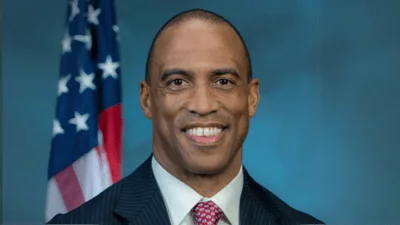This week we celebrated International Women’s Day with our friends around the world! Each and every day, we recognize the social, economic, cultural, and political achievements of women. We acknowledge the ongoing fight for gender equity and equality and the progress that has been made in advancing women’s rights. But today also reminds us of the work that still needs to be done to ensure that all women have access to equal opportunities and may live in a world free from discrimination and violence.
Women are on the frontlines of the climate crisis, and they suffer disproportionately from its impacts. This includes increasing rates of gender-based violence and conflict related to less access to food, water, and fuel and the impact it has on agriculture, which unequally affects women, particularly in low-income countries and marginalized communities.
We know that women are often the primary caregivers for their families, responsible for securing the most basic necessities - food, water, and other resources. As climate change leads to more extreme weather events and natural resource scarcity, women and girls are forced to spend more time securing these resources, which can negatively affect their education, health, and economic opportunities. This is compounded by the fact that women and girls in many societies have limited access to education, healthcare, and financial resources, which only serves to make them more vulnerable.
The good news is, despite these challenges, women and girls around the world are leading the way in mitigating, adapting to, and addressing the impacts of the climate crisis. They’re at the forefront of efforts to promote sustainable agriculture, reduce waste and pollution, and develop renewable energy sources. We know that empowering women politically, economically, and socially - and meaningfully including their needs and perspectives in decision-making - leads to more equitable and sustainable policies.
The United States recognized these crucial linkages in the first-ever U.S. National Strategy on Gender Equity and Equality, and we are working to empower women and girls as leaders - across all sectors and at all levels - in combating the climate crisis.
At the UN Climate Conference (COP27) last November, the U.S. Government announced a series of actions at the gender-climate nexus. The Bureau of Energy Resources and the Bureau of East Asia and Pacific Affairs highlighted the current rollout of the pilot Women in Energy Strategy and the Office of Women’s Issues previewed a forthcoming initiative to develop a global network of girl climate innovators and activists. These efforts are supplemented by over $3.2 million in programs supporting women’s participation in climate decision-making and innovation in Africa, the Indo-Pacific, and South and Central Asia. We were also excited to host local climate leaders and key U.S. partners to discuss a vision for the future of sustainable, local, and gender-responsive climate action at the U.S Center Pavilion.
And in the Bureau of Oceans and International Environmental and Scientific Affairs (OES), we are taking action to support the next generation of women climate leaders in Africa through the launch of the Central Africa Women’s Initiative for Climate Action (CAWICA). CAWICA is a regional initiative designed to strengthen capacity and increase participation of early-career women in national climate change processes. Through this project, over 100 women have participated in a series of workshops about climate change science, greenhouse gas accounting, and national and international climate policy. Similarly, at the African Leaders Summit in December, the Bureau of Energy Resources launched the Accelerating Women’s Empowerment in Energy project to address barriers to women’s entry, promotion, and retention in the clean energy sector in Kenya and South Africa.
Not just on International Women Day, but every day, OES is committed to investing in women and girls in all their diversity, and in the critical role they play in building an equitable and sustainable world for all. And that includes action behind our commitment - women are leading the way in OES. Not only does our Bureau‘s leadership team include talented women leaders across the board, from our Principal Deputy Assistant Secretary Jennifer R. Littlejohn to our Deputy Assistant Secretary for Oceans, Fisheries, and Polar Affairs Maxine Burkett, but our lead negotiators on nature, biodiversity, and the ocean, and plastic pollution are also all women: Christine Dawson, Director of the Office of Conservation and Water leads us on the Convention on Biological Diversity; Elizabeth Kim, Director of the Office of Ocean and Polar Affairs, led the U.S. team negotiating the recent high seas treaty at the UN; and Larke Williams from the Office of Environmental Quality leads the U.S. negotiations team to develop a global agreement on plastic pollution. We’re putting action behind our words in every way - and we’re just getting started!
Source: U.S. Department of State, Bureau of Oceans and International Environmental and Scientific Affairs







